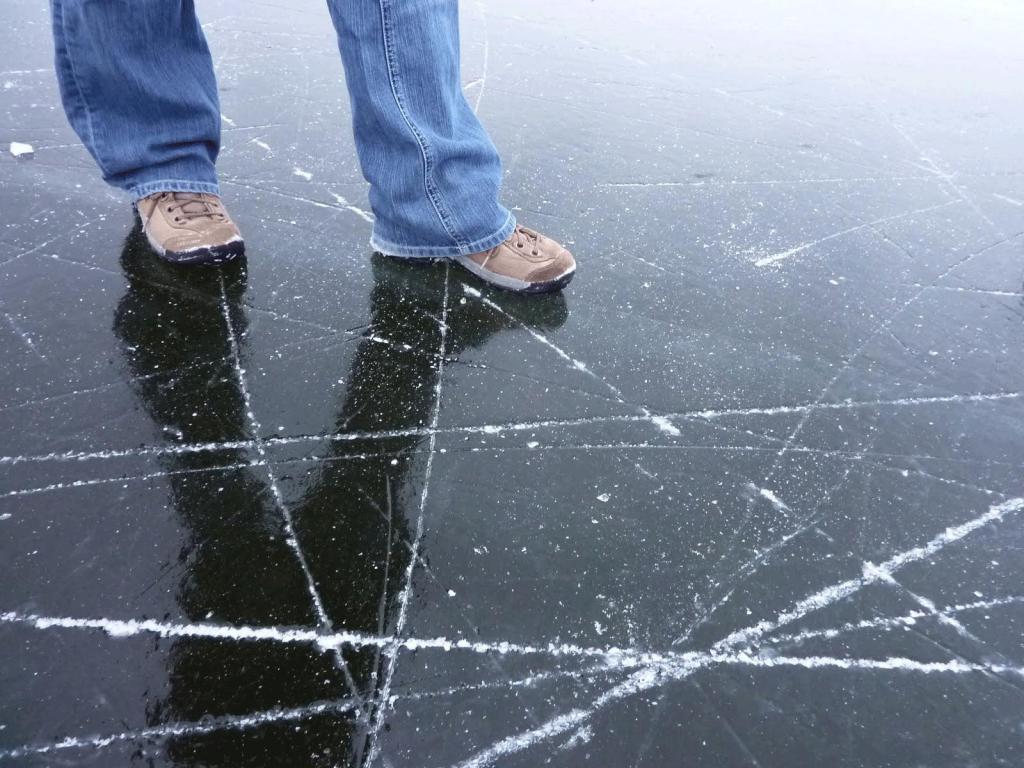Many of our compatriots who love winter fishing spend all weekend on ice from November to March. And not every one of them knows the rules of behavior in frozen reservoirs. This means that he risks his life, as well as the lives of those around him who may suffer, saving those who have fallen under the ice.
Minimum Safe Thickness
The rules for safe behavior in frozen ponds begin by checking the thickness of the ice. What should be this indicator so that a person of average build could fearlessly walk on it?
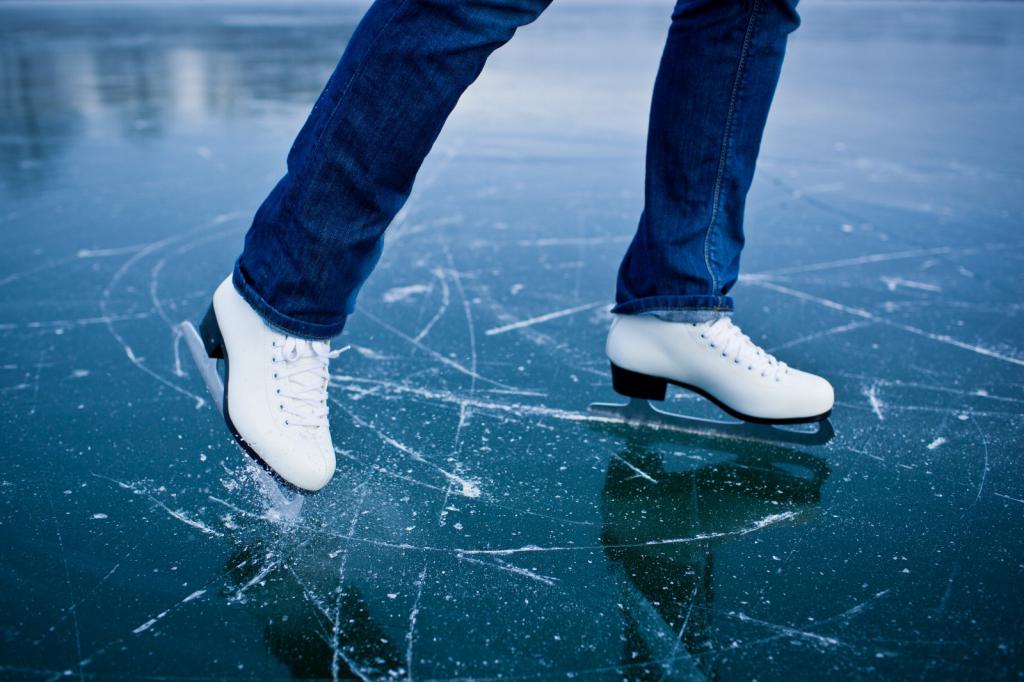
In order for one person weighing about 70–80 kilograms, carrying 10–15 kilograms of clothing and equipment, to walk confidently on the ice without flinching from each cod, the ice should have a thickness of at least 7 centimeters.
Planning to skate on a frozen river or lake? In this case, make sure that the ice thickness is at least 12 centimeters. The small area of the blade of the skates, combined with high hardness, can lead to the fact that the ice simply can not stand it.
If there is a need to arrange a foot crossing, along which tens and hundreds of people will go every day, then the rules of behavior in frozen reservoirs are further tightened. The safe thickness in this case is already 15 centimeters.
Well, for the movement of cars you need ice 30 cm thick or more.
Safety Equipment
Experienced fishermen, going fishing on the first ice (at this time the water did not have time to completely cool down and the bite is much more active than in winter), do not forget to take not only gear, but also additional equipment that may be needed in extreme situations. At one time, even at OBZh lessons, the rules of conduct on frozen ponds were told with a list of such subjects.
The simplest and most affordable is the rope. A roll of thin paracord weighs only 70-100 grams, a skein of 7-10 meters is easy to fit in your pocket, and in extreme situations it is able to pull a person out of the wormwood, without approaching him at a dangerous distance.

Some fishermen also use snowshoes or even short skis. Yes, it looks very unusual and it may seem ridiculous to some. However, going to the pond to fish alone, a person can only rely on himself - in an emergency no one will come to the rescue. And skis several times increase the area of support, allowing you to confidently move even on ice with a thickness of 4-5 centimeters.
How to help a person who has fallen under the ice
Continuing to talk about the rules of human behavior in frozen reservoirs, it is worth talking about the correct salvation of the failed - everyone should know about it, because no one knows what kind of test life has prepared for him.
To begin with, you should not panic and immediately run to the aid of a person, even if it is your close friend, brother, son or father. Otherwise, there is a high probability of being in ice water together.
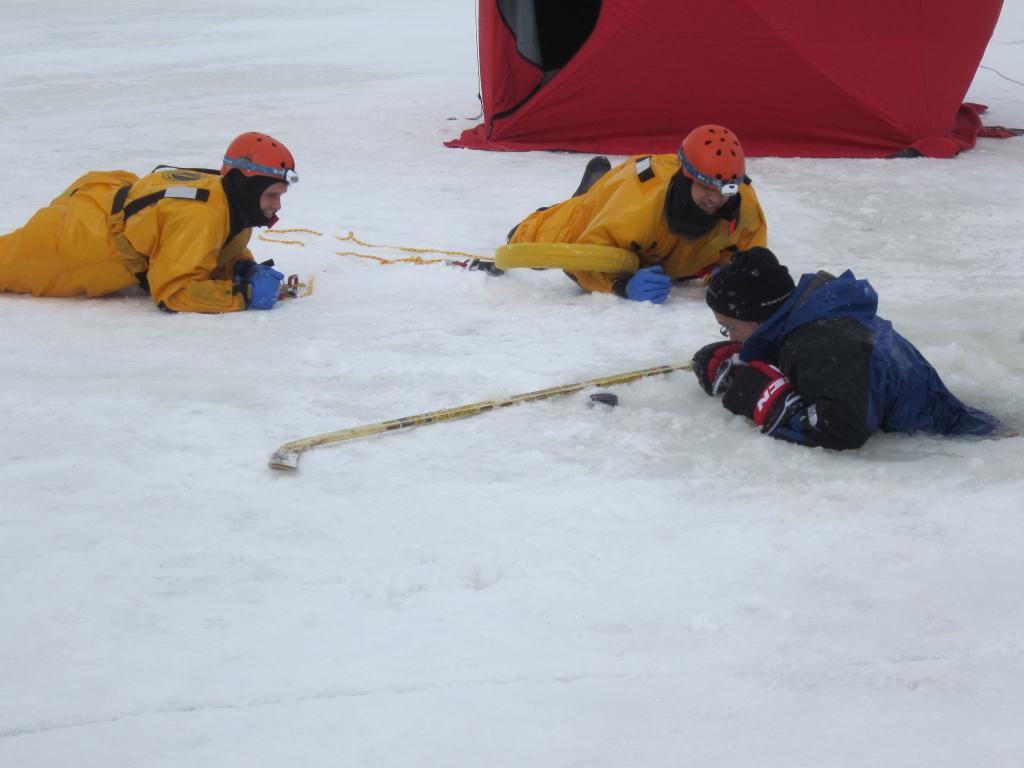
Scream from afar, draw his attention to yourself. Seeing that help is near, he will calm down, worry less and be easier to save.
Approaching a distance of 3-4 meters, go down on the ice and crawl, leaning with your whole body - arms, legs and stomach, crawl forward. It is advisable to have a coil of cord, a stick, ski or any other object on hand — it is very dangerous to approach a distance that allows you to reach out. In extreme cases, you can take off your jacket and, holding one sleeve, throw the second to the drowning man - this will help him from a distance of at least one and a half meters.Even better if there is a scarf or belt that can be quickly removed.
Immediately after salvation, you need to remove wet clothes and, if possible, replace them with dry ones. Otherwise, it is very good to squeeze out the wet one and pull it. If you have a woolen sweater, socks or a scarf - this is very good. Even wet coat heats well.
How to act if ice breaks underfoot
Now we will tell you about the rules of behavior when driving on frozen ponds for your personal safety.
You walk on ice and suddenly notice that it is cracking, covered with thin cracks? Panic is not worth it - from small cracks to failure is far away. Especially since panic is never good. Continue to move - the main thing - do not try to run to quickly get away from a dangerous place, and do not make any sudden movements.
If during further movement the ice continues to crack, carefully lower yourself onto the ice and continue the path crawling - the sharply increased area of the support provides less load and almost completely eliminates the possibility of failure.
What to do if failed
Of course, maintaining calm in such a situation is very difficult - you need to have iron nerves in order not to panic. But still, it is precisely the absence of panic that is the key to survival.
Call for help right away if there are people nearby. Wave your hand while holding the other at the more or less firm edge of the ice. It is very important to attract attention, and then hold out until help arrives.
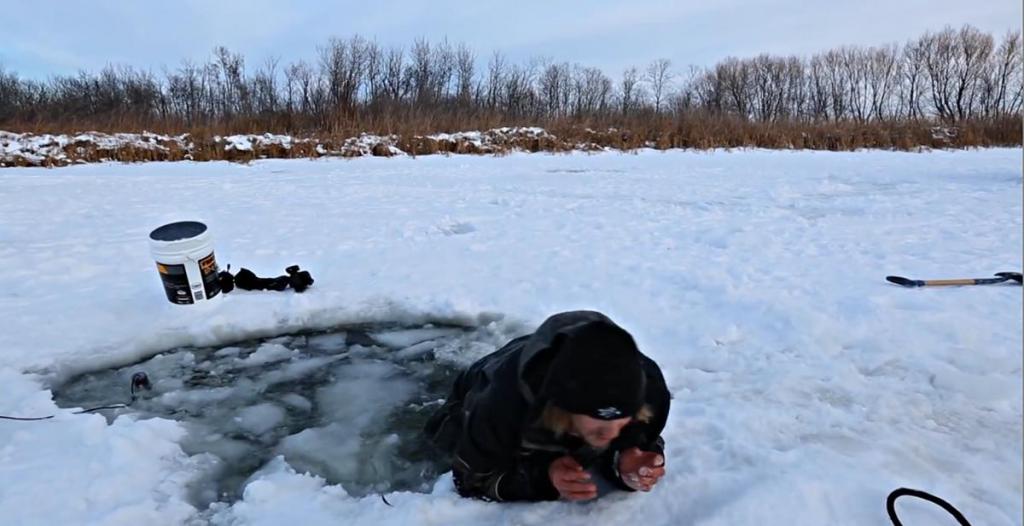
Worse if you are one or other people in a pond at a great distance. Have to rely on yourself.
First you need to spread your arms to the sides - then you will not plunge with your head, but it is through your head that most of the heat is lost. Do not try to get out on the ice, leaning on your chest or hands - the edge will break off, and you can plunge into the ice water with your head. Instead, rest your elbows on the edge of the ice. Try to give the body a horizontal position. Only after this, continuing to rely on ice, throw one leg on it. If it can withstand and does not break, smoothly roll over the body and roll away from the edge with a roll.
After that, do not get on your feet. Continue your way crawling - preferably in the direction where you came from. After all, you only failed here, which means that earlier the ice was more durable and will certainly keep you, even in clothes heavier than water.
Sensation of falling into ice water
Knowing what a person experiences, plunging into cold water, it is easier to bear the shock - it will no longer be such a surprise.
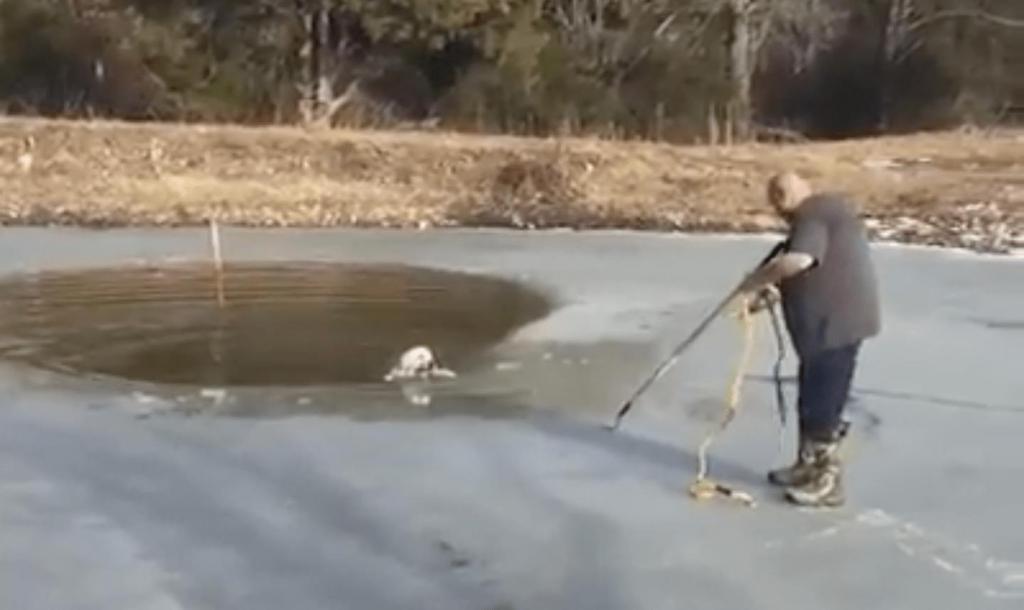
It all starts with a sharp tingling throughout the body. Almost immediately, a person begins to tremble heavily, starting a backup warming mechanism.
Breathing goes astray instantly - it is difficult to breathe air, it seems that the chest compresses the steel hoop, which does not allow breathing normally.
Blood vessels narrowed sharply to give off less heat. To compensate, the heart begins to work much more actively - the pulse jumps, as does blood pressure.
Fishing tips
Continuing to talk about the rules of conduct in frozen ponds, it is worth giving some advice to fishermen.
Moving on thin ice, carry an ice pick in your hands. Before each step, check with it the thickness of the ice cover. You need to beat not directly in front of you, but a little to the side - usually to the right (if the person is not left-handed). If an ice pick struck him, stop immediately and return as you came here.

If there is a danger of falling under the ice, remove the backpack and hang it on one shoulder. Then, once in the water, you can instantly dump it. Yes, it's a pity to tackle. But the backpack will be pulled to the bottom, dramatically reducing the chances of survival.
Check with experienced like-minded people in advance if there are any warm springs in the fishing area - because of them, the ice thickness can drop sharply, reaching critical.
Conclusion
Now you can easily list the rules for safe behavior in frozen ponds.This will allow you to survive in an extreme situation, and if necessary, come to the rescue of people who have fallen into icy water.
